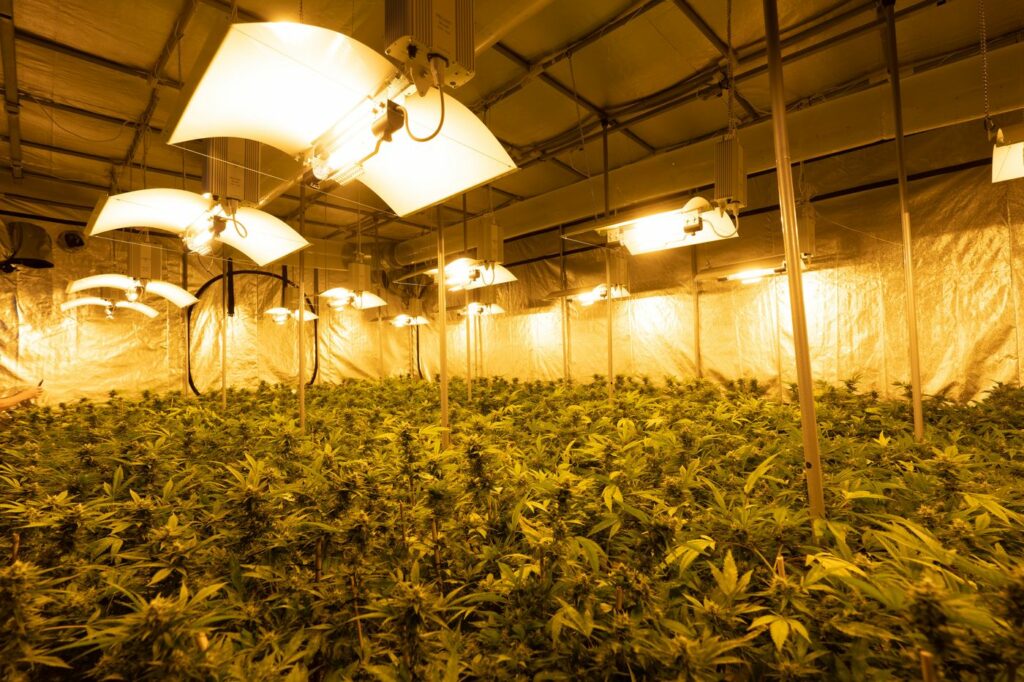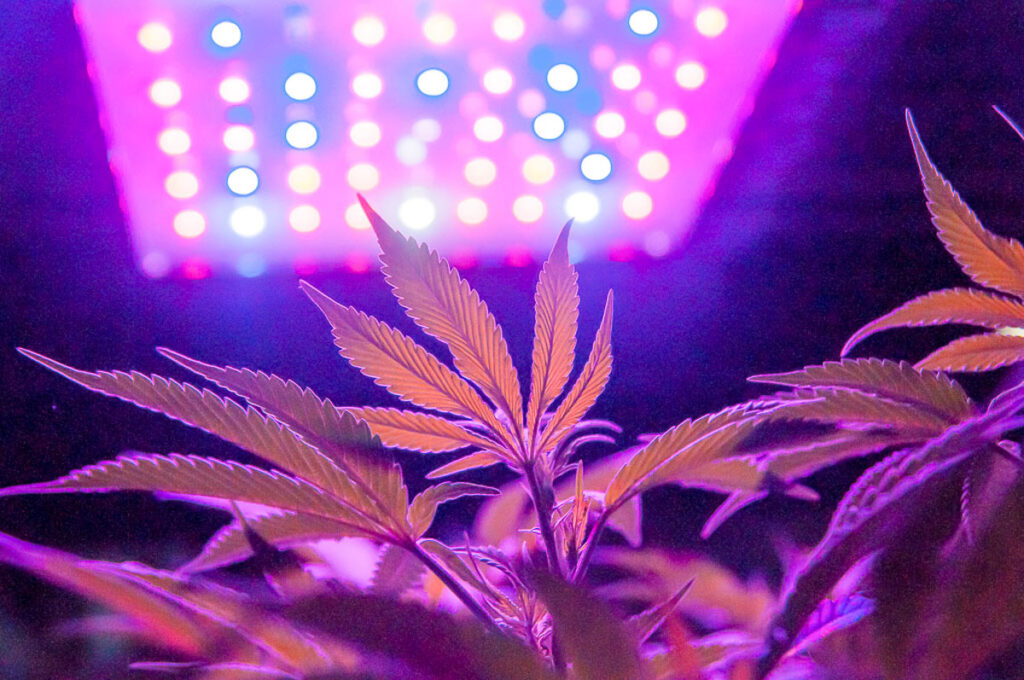Introduction
Cannabis cultivation has evolved significantly over the years, with advancements in technology and research shedding light on the crucial role that lighting plays in the growth and development of cannabis plants. Proper lighting is not just an option; it is a necessity for achieving optimal yields, potency, and overall quality in cannabis crops. In this comprehensive guide, we’ll delve into the reasons why proper lighting is crucial for cannabis cultivation and explore the different lighting options available to growers.
As legalization and commercialization of cannabis continue to expand globally, growers are increasingly turning to sophisticated lighting systems to maximize crop yields and quality. From indoor grow operations to greenhouse cultivation, proper lighting is a fundamental component of successful cannabis cultivation strategies. With a deeper understanding of the science behind lighting and its impact on plant physiology, growers can harness the power of light to cultivate healthy, vigorous cannabis plants with high yields and potent cannabinoid profiles.
Understanding the Importance of Lighting
Light is one of the most critical factors influencing plant growth and development. In cannabis cultivation, light serves as the primary energy source for photosynthesis, the process by which plants convert light energy into chemical energy to fuel growth. Without adequate light, cannabis plants cannot photosynthesize effectively, leading to stunted growth, poor yields, and reduced potency. Light intensity, spectrum, and duration all play essential roles in optimizing photosynthesis and maximizing plant growth.
Light intensity refers to the amount of light energy received by the plant’s leaves per unit area. Cannabis plants require high-intensity light to support robust growth and flower production. Insufficient light can result in stretched, leggy plants with sparse flowers, while excessive light can cause leaf burn and other stress-related issues.
Light spectrum refers to the range of wavelengths emitted by a light source. Different wavelengths of light influence various aspects of plant growth and development. Blue light promotes vegetative growth and root development, while red light stimulates flowering and bud production. Full-spectrum lights provide a balanced mix of wavelengths, allowing growers to support all stages of plant growth with a single lighting source.
Light duration, or photoperiod, also plays a crucial role in cannabis cultivation. During the vegetative stage, cannabis plants require a minimum of 18 hours of light per day to maintain vegetative growth. In the flowering stage, plants require a shorter photoperiod of 12 hours of light per day to initiate and sustain flower production.
By understanding the importance of light in cannabis cultivation and optimizing lighting conditions to meet the specific needs of your plants, you can create an ideal growing environment and achieve exceptional results.
Key Factors Influencing Cannabis Lighting Needs

Several factors influence the lighting requirements of cannabis plants, including the stage of growth, light intensity, spectrum, and duration. Understanding these factors is essential for selecting the right lighting setup and maximizing the potential of your cannabis crop.
1. Growth Stage
Cannabis plants have different lighting needs at each stage of growth. During the vegetative stage, plants require more blue light to promote leafy growth and healthy root development. In contrast, during the flowering stage, plants require more red light to stimulate flower production and maximize bud development. This is because blue light wavelengths mimic the natural light spectrum of spring and summer, signaling to the plant that it’s time to grow vegetatively. On the other hand, red light wavelengths mimic the spectrum of autumn, signaling to the plant that it’s time to flower and produce buds. By providing the right spectrum of light at each stage, growers can optimize plant growth and maximize yields.
2. Light Intensity
The intensity of light has a direct impact on plant growth and yield. Cannabis plants require high-intensity light to support robust growth and flower production. Insufficient light can result in stretched, leggy plants with sparse flowers, while excessive light can cause leaf burn and other stress-related issues. Therefore, it’s crucial for growers to carefully manage light intensity to ensure optimal conditions for their plants. By providing the right balance of light intensity, growers can promote healthy growth, maximize flower production, and achieve higher yields of top-quality cannabis. Proper light intensity is essential for maximizing the potential of cannabis plants and ensuring a successful harvest.
3. Light Spectrum
The light spectrum refers to the range of wavelengths emitted by a light source. Different wavelengths of light influence various aspects of plant growth and development. Blue light promotes vegetative growth and root development by encouraging the production of chlorophyll and other essential pigments necessary for photosynthesis. On the other hand, red light stimulates flowering and bud production by triggering the production of hormones responsible for initiating and sustaining the flowering process.
Full-spectrum lights provide a balanced mix of wavelengths, including blue, red, and green light, along with other spectrums. This allows growers to support all stages of plant growth with a single lighting source, simplifying the cultivation process and ensuring consistent results. By providing a full spectrum of light, growers can mimic natural sunlight and create optimal growing conditions for their cannabis plants, resulting in healthier, more vigorous growth and higher yields of top-quality buds.
4. Light Duration
The duration of light exposure, or photoperiod, also plays a crucial role in cannabis cultivation. During the vegetative stage, cannabis plants require a minimum of 18 hours of light per day to maintain vegetative growth. This extended photoperiod simulates the long days of spring and summer, signaling to the plant that it is time to focus on vegetative growth rather than flowering.
In the flowering stage, plants require a shorter photoperiod of 12 hours of light per day to initiate and sustain flower production. This shorter photoperiod mimics the shorter days of autumn, signaling to the plant that it is time to transition from vegetative growth to flowering. By controlling the photoperiod, growers can manipulate the growth cycle of their cannabis plants and induce flowering at the desired time, resulting in more predictable harvests and higher-quality buds.
Also Read: Understanding the Fundamentals of Indoor Cannabis Growing
Common Lighting Options for Cannabis Cultivation
Several lighting options are available to cannabis growers, each with its advantages and disadvantages. Understanding the pros and cons of each lighting type is essential for selecting the right option for your specific growing environment and cultivation goals.
1. High-Intensity Discharge (HID) Lights
HID lights, such as metal halide (MH) and high-pressure sodium (HPS) lamps, have long been popular choices for cannabis cultivation due to their reliability and effectiveness. MH lamps emit a blue spectrum of light suitable for the vegetative stage, promoting lush, vigorous growth and healthy root development. On the other hand, HPS lamps emit a red spectrum ideal for flowering, stimulating robust bud development and maximizing yields.
These HID lights are relatively affordable and provide high light intensity, making them suitable for large-scale indoor grows where maximizing yields is a priority. While they may generate more heat and require additional cooling equipment compared to other lighting options, HID lights remain a preferred choice for many cannabis growers due to their proven track record and ability to deliver consistent results.
2. Light-Emitting Diode (LED) Lights
LED lights have gained popularity in recent years due to their energy efficiency, customizable spectrum, and long lifespan. LED lights emit specific wavelengths of light tailored to the needs of cannabis plants at different stages of growth, providing growers with greater control over the lighting environment.
While LED lights have a higher upfront cost compared to HID lights, they offer significant energy savings over time and produce less heat, reducing the need for additional cooling equipment and lowering overall operating costs. Additionally, LED lights have a longer lifespan than traditional HID lights, resulting in fewer replacement and maintenance expenses over the long term. As a result, many growers are turning to LED lights as a cost-effective and sustainable lighting solution for cannabis cultivation.
3. Fluorescent Lights
Fluorescent lights, such as T5 and compact fluorescent lamps (CFLs), are popular choices for small-scale or beginner cannabis growers due to their affordability and ease of installation.
These lights produce less heat compared to HID or LED lights, making them suitable for growers with limited ventilation or space constraints. However, fluorescent lights have lower light intensity compared to other lighting options, which may not be sufficient for high-yield or commercial cannabis grows. Despite their limitations, fluorescent lights remain a practical choice for hobbyists or growers looking to start small and gain experience before investing in more advanced lighting systems.
4. Ceramic Metal Halide (CMH) Lights
CMH lights, or Ceramic Metal Halide lights, represent a newer lighting technology that has gained popularity among cannabis growers for its ability to combine the benefits of both HID and LED lights. These lights emit a broad spectrum of light similar to natural sunlight, providing an optimal balance of wavelengths for all stages of plant growth.
CMH lights are more energy-efficient than traditional HID lights, resulting in significant energy savings over time. Additionally, they produce less heat compared to HID lights, reducing the need for additional cooling equipment and creating a more comfortable growing environment for plants. As a result, CMH lights have become a popular choice for indoor cannabis cultivation, offering growers a cost-effective and sustainable lighting solution.
Conclusion
Proper lighting is a critical factor in cannabis cultivation, influencing plant growth, yield, and overall quality. By understanding the lighting needs of cannabis plants and selecting the right lighting setup, growers can create an optimal growing environment and maximize the potential of their crops. Whether you’re a beginner or experienced grower, investing in proper lighting is essential for achieving successful harvests and producing high-quality cannabis.
By considering factors such as light intensity, spectrum, duration, and type, growers can tailor their lighting setup to meet the specific needs of their plants and achieve exceptional results. With the right lighting, growers can optimize plant health, stimulate robust growth, and enhance cannabinoid and terpene production, ultimately leading to a more successful and rewarding cultivation experience.

